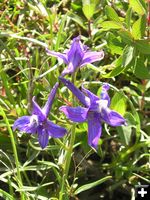
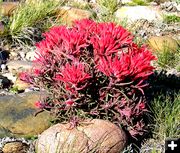
Desert Paintbrush
Perhaps the best known wildflower in Wyoming is the state flower, Indian Paintbrush. This is the desert variety, providing a splash of color among the rocks and sagebrush.
|

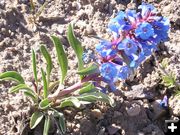
Sand Penstemon
The large family of penstemons includes many beautiful mountain varieties, but the roadsides & sand dunes of the high desert claim this one.
|

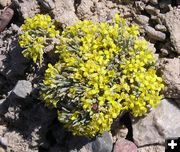
Bladderpod
Bladderpods favor gravelly slopes and plains. Fruit matures into a round or two-lobed pod.
|

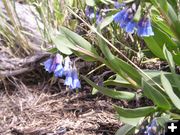
Bluebell
Bluebells are common where spring moisture is abundant. They are seen frequently under sagebrush canopies and other sheltered areas.
|

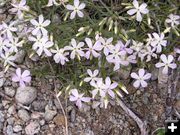
Long Leaf Phlox
Often intertwined with sagebrush and other plants, long-leaf phlox is among the toughest and prettiest flowers on the sagebrush steppe.
|

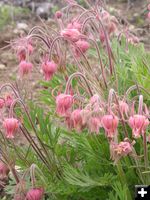
Old Man's Beard
Old man's beard is a member of the rose family. The flowers give way to fruits that resemble a tuft of long, feathery hairs. The roots of this plant have an interesting sassafras-like taste and can be boiled for tea.
|


Oval Leaf Desert Buckwheat
The desert buckwheat family dominates the sagebrush landscape, ranking right behind sagebrush and grass. There are many species, all adapted to drought, each favoring a particular soil type. Desert buckwheat is an important source of nectar for bees, and also provides seeds for birds and rodents.
|

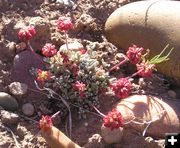
Thyme Desert Buckwheat
This member of the desert buckwheat family forms as a cushion plant and likes basaltic soils, or lithosols.
|

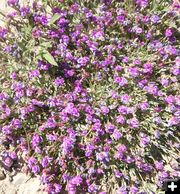
Mat Milkvetch
Milkvetches are extremely drought tolerant. This cushion plant mingles with phlox, asters and other cushion plants.
|

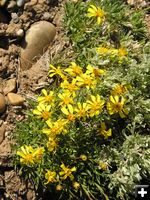
Goldenweed
Goldenweed thrives in the driest rocky and gravelly soils of the sagebrush steppe.
|

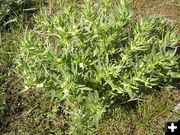
Puccoon
The name "puccoon" may be more interesting than the plant's appearance, but this was an important plant to the Plains Indians, who used the roots for respiratory ailments and as food. It tolerates a wide variety of well-drained soil types.
|

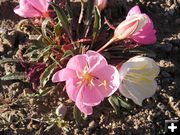
Desert Evening Primrose
Find these showy, up to 4-inch-wide flowers along sandy banks and roadsides. Blooms begin white then turn pink with age. Always a wonderful surprise on evening or early morning walks.
|
